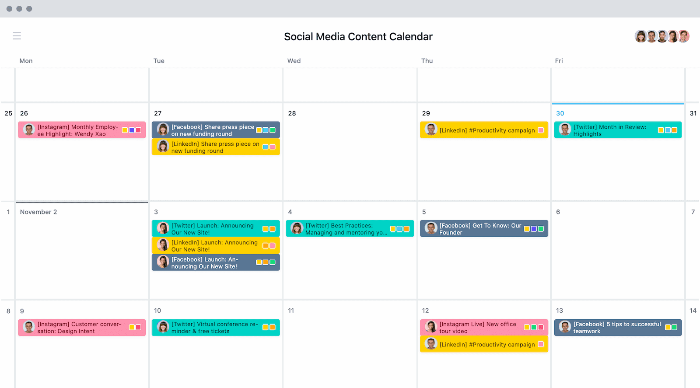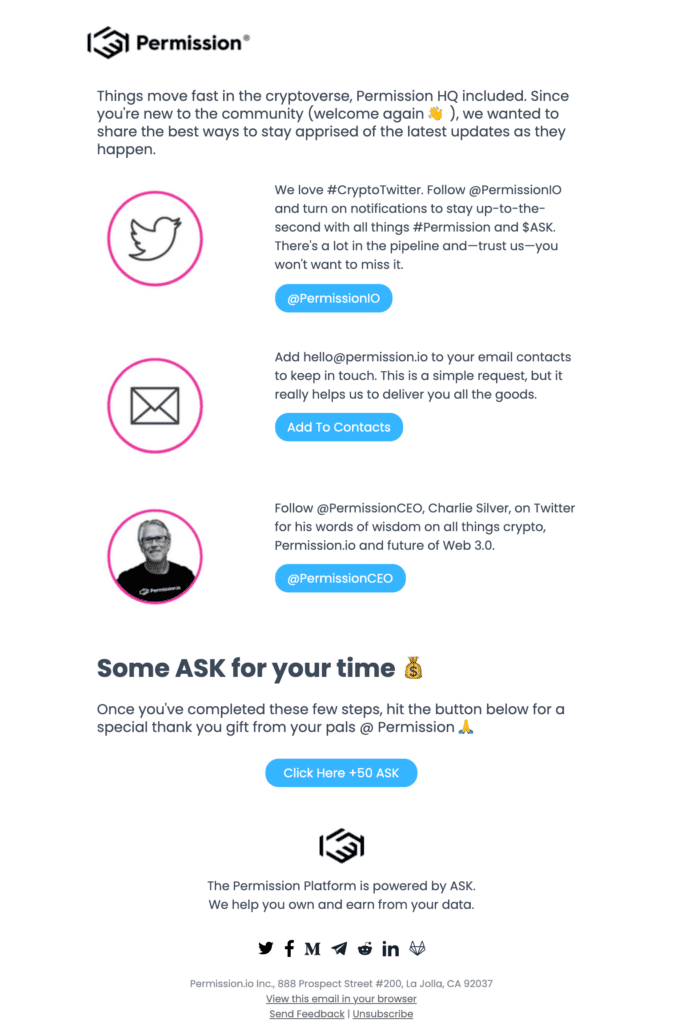
Social media will become personalized in 2021. It will no longer be enough just to post a few words and a picture. As influencers and bigger accounts mix stories with feed, users will be expected to share more personal content. If you are looking to attract followers, it is important to start thinking about how to curate a perfect feed. Here are some trends that you need to be aware of:
Influencer marketing
Influencer marketing is a growing trend that has been changing quickly. People outside of a company can promote products or services. This has a significant impact on how people interact with brands' products and services. Pinterest, Instagram, Facebook and Instagram are the most common social media platforms for influencer-marketing. While the types of content that influencers post vary, all have the exact same impact on overall social media experience.
To be authentic is the best way to create a digital community for influencer market. Many creators are moving away form a well-curated feed aesthetic. They share more candid photos of their everyday lives. Brands should work with people who can create ads for them, not just those who are looking to find the perfect influencer on social media who has a perfect aesthetic.
Engagement with the audience
Monitoring your audience's engagement strategy through social media analytics is a great way of improving your content and reach. Social media metrics will give you insights into how your audience interacts to your page and website. They also show you total clicks as well as bounce rates. The type of engagement you seek depends on your target audience, brand personality, product, and other factors. Here are some tips to help you increase audience engagement on social media.

Build a community that is interested in your products and services. This is crucial for increasing your brand's influence on social media. Interacting with these communities will give you the chance to build a loyal customer base that will share your content. You need to regularly talk about your products and services on social media in order to increase engagement. Your audience wants to know how your product solves problems or how it connects to industry trends.
Livestreaming
Livestreaming can be a great advertising tool for brands that want to reach new customers. Live streaming allows brands to broadcast content in real time, providing a unique experience to viewers. This allows brands share authentic content, such behind-the-scenes, with their audiences. This provides a unique experience for consumers and marketers. According to New York Magazine, 82% of consumers prefer live video to text.
A large number of viewers watch live streaming videos on their mobile devices, and mobile devices account for nearly 70% of YouTube viewership. Mobile streaming is on the rise, with optimized video formats for mobile phones including square and vertical videos. In households, video viewing is on the decline due to a pandemic. In 2020, 4.5billion people will be connected online. As a result, live streaming on social media is likely to become even more common in 2019.
Augmented reality
Virtual AR gives consumers the ability to try on clothes from the store, but virtual AR lets them do it at home. In stores, brands can use AR to increase audience engagement and encourage purchases. Instagram is testing AR functionality for ads. It's possible to virtually try on makeup or sunglasses. The Lens Web Builder is a free service that allows brands to create AR experiences.

While augmented reality has huge potential for marketing, companies have to be aware of some important issues before making major investments. First, companies must allocate budgets to innovation and training. A brand should avoid using the technology to promote products or create ads. They should make sure users have a positive experience. AR can still be effective if a brand creates an app that is useful and doesn't require the use of advertising software.
FAQ
How can you build a content-marketing strategy that works?
Before you can create a content marketing strategy, it is important to first decide what content type you want. Next, you need to identify who your target market are and how they use Internet. Next, find the channels that best reach your target markets. Next, identify the best keywords for each channel. Finally, write compelling copy for each piece.
Is Content Marketing Strategy right to me?
A Content Marketing Strategy is perfect if you know exactly what you want to communicate.
However, if you need some guidance before getting started, here are a few questions to ask yourself:
Does my business need to communicate something specific? Or should I create content that appeals to a wider audience?
Is it better to generate leads or convert visitors into buyers?
Am I trying to promote one product or multiple products?
Would I be interested in reaching out to people outside of my industry sector?
If you answered "yes", to any one of these questions, then a content marketing strategy is just what you want.
What is strategic content marketing?
Content Marketing is the art of creating valuable content for others to share across channels. It's about giving people what it is they want. This understanding is the key to success in business.
Strategic Content Marketing gives you the ability to provide exactly what your clients need at precisely the right time.
Knowing what people care most about is key. Listening carefully can help you understand their thoughts and feelings. Then you have to create high-quality content that answers their questions and solves their problems. This builds loyalty and trust. It also ensures you are available to them when they have a need for your product or services.
How much does content marketing cost?
Pricing for content marketing depends on whether you want to outsource or do it yourself. Outsourcing content-marketing services can be cheaper than hiring full time employees and allow you to scale quickly if you need more coverage.
According to HubSpot research, outsourcing content production costs around $5 per lead generated (for B2B companies) compared to $22 per lead generated (for consumer brands).
However, there are plenty of web resources that provide free content marketing tools that you can use to create engaging content that converts.
There are many methods to optimize content for search engines like Google or Bing. You have the option to write original articles or guest post on blogs. You can also curate content from different websites and reuse existing materials.
You'll need to learn the skills necessary to create great content for self-produced content. But once you master it, producing content will be relatively easy.
You can start by creating simple landing pages using WordPress and then move on to building out your site. You can then build your portfolio over time.
What is the average time it takes to start content marketing?
It depends on the size and scope of your business. Smaller businesses often don't have the resources to invest immediately in content marketing. It can be a great investment if you are willing to invest some time.
Statistics
- This marketing strategy landed Ford a 15.4% conversion rate. (neilpatel.com)
- Companies that use content marketing see approximately 30% higher growth rates than businesses not using it. (mailchimp.com)
- According to our research, 65% of companies with very successful content marketing in 2021 ran content audits at least twice a year. (semrush.com)
- Content marketing produces 3X more leads per dollar spent. Content marketing costs 62% less than traditional marketing. (criteo.com)
- Out of the 1,500 marketers we surveyed for our State of Content Marketing report, 78% who felt their content marketing strategy was exceptionally effective in 2021 had documented their strategy. (semrush.com)
- According to research compiled by Coschedule: Companies that publish 16+ blog posts a month get as much as 3.5x as much traffic as those that publish 0-4 posts a month. (criteo.com)
- Seventy-two percent business to business (B2B) (mailchimp.com)
- In fact, would pay more for a better customer experience, and 86% of B2B buyers would pay more. (neilpatel.com)
External Links
How To
How can you make your videos look more spectacular?
Video Marketing can be one of the most powerful tools within Content Marketing. It helps you get closer to your audience, engage them emotionally and build trust. How do we turn boring into awesome? Let's look at some simple tips!
-
Tell a good story. Every piece of communication is better if it has storytelling. Without storytelling, video marketing will not work. It is important to decide what type of stories you would like to tell. Is it educational? Educational? Inspiring? You can find inspiring stories on social media through videos and photos. Use these stories as inspiration to create your own.
-
Images are a powerful tool. Images convey emotions better than words. They help us connect with others and feel empathy. Images are essential for a video. You can embed images directly in your blog posts, or add them to your slideshows.
-
It's easy to share. Make it easy for your viewers to share the message. Include sharing buttons for your videos. Add social icons in your slideshows. Add "Share" buttons to your videos, especially if you have a YouTube Channel.
-
Don't overdo it. If you have too many graphics and too much information, your viewer might lose interest. Keep it simple. A few striking images are all that is needed to grab your attention and keep you there.
-
Keep it short. Short videos are very popular. If you want to create a buzz around your brand, try creating bite-sized videos that are only 5 minutes long.
-
Get feedback. Listen to your audience. Ask them what works and what doesn't. Ask them for their feedback to improve your content.
-
Make a plan. Once you've created your first video, think about how you can create more. Can you create a series? A playlist could be created with only the most popular videos.
-
Test, test, test. It's not what you want. Be sure to test your video on your audience before you publish it. Take a look at the reactions. Next, make adjustments based on the results.
-
Repeat. You can repeat steps 1-8 until your formula is perfect. Once you understand what works, you will be able to make great videos over and over again.
-
Measure results. It is crucial to measure success with your videos. How did they perform? Do certain audiences prefer specific videos? These questions will allow you to fine-tune the strategy.
-
If necessary, make adjustments. Do not stop learning even after your video campaign launches. You can learn from your mistakes and adjust your plan as needed. The best marketers always look for ways to improve.
-
Enjoy it. Video marketing isn't hard, but it does take patience. As you gain experience, new strategies, tactics, and ideas will be available to you to help grow your business.